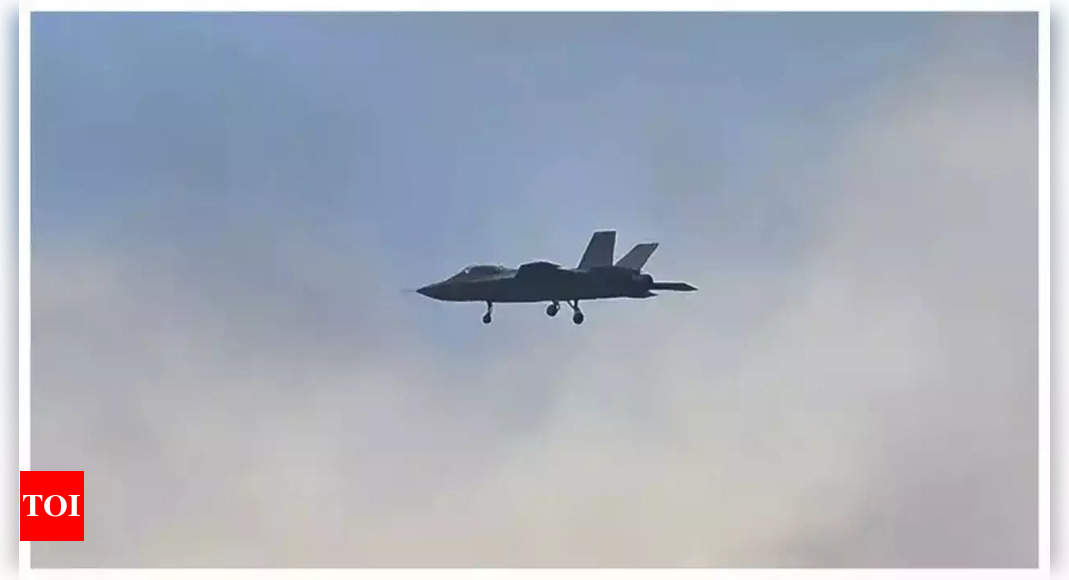
The United Arab Emirates (UAE) Air Force and China’s People’s Liberation Army Air Force (PLAAF) held a second joint exercise “Falcon Sheild” in Xinjiang province which has raised concerns in the West, particularly the US.
The satellite imagery, provided by the International Institute for Strategic Studies (IISS), of China and UAE’s military exercise revealed that Abu Dhabi had deployed Mirage 2000-9 fighter bombers in Beijing and also more than one.The deployment of fighters is seen as a new sign of closeness with China, raising concerns over Chinese access to Western military aircraft.
It is worth noting that the Mirage 2000 aircraft are stationed separately from Chinese aircraft at Hotan Airport and this type of aircraft is also operated by the Taiwanese air force.
The Falcon Shield marks the second edition. The first edition had already raised alarms among some Western countries and regional allies in the Indo-Pacific, seen as China’s effort to expand its influence in the UAE and the Middle East.
Familiarisation with the Mirage 2000 and its performance and capabilities, as well as the possibility of dissimilar air-combat training, would be of value to the PLAAF.
As the host nation, China has the opportunity to to closely observe their systems and can access various assets openly or covertly. For instance, Chinese PLAAF airborne early warning (AEW) aircraft could monitor the exercise, potentially showcasing the effectiveness of Chinese AEW radar in detecting the Mirage 2000.
Depending on the exercise’s scope, it could also assess the performance of Chinese fighter radar, electro-optical systems, and radio-frequency missile seekers.
Additionally, the exercise could test the capabilities of the China Airborne Missile Academy PL-10 (CH-AA-9) imaging infrared short-range air-to-air missiles in dissimilar air combat scenarios. China has likely utilized its air activities near Taiwan’s Air Defense Identification Zone to evaluate radar and seeker performance amidst Taiwanese air force responses. Compared to real-world scenarios, an air exercise offers a controlled environment for repeated simulations of engagements.
In recent years, the relationship between the UAE Air Force and China’s defense aerospace sector has grown significantly, as per the IISS report.
The broader ties between the UAE and China, including the UAE’s decision to engage Chinese telecommunications firm Huawei for its 5G network infrastructure in 2019, had raised concerns in Washington. This decision disrupted discussions between the UAE and the US regarding the UAE’s intended purchase of Lockheed Martin F-35 Lightning II aircraft.
Additionally, the Emirati Air Force currently operates Chinese medium-altitude long-endurance UAVs, specifically the Wing Loong II, based at Qusahwirah airbase, while its F-16E/Fs are stationed elsewhere. It remains unclear whether Chinese maintenance or support personnel are involved with the Wing Loong II operations. The acquisition of the L-15A aircraft may necessitate the presence of Chinese support staff, particularly in the initial stages, presenting a potential development closely monitored by the US.
Conducting joint exercises with the PLAAF in China had shown Washington about the UAE’s level of independence. This approach is uncommon among operators of US combat aircraft, highlighting the UAE’s strategic decisions amidst evolving geopolitical dynamics.
The satellite imagery, provided by the International Institute for Strategic Studies (IISS), of China and UAE’s military exercise revealed that Abu Dhabi had deployed Mirage 2000-9 fighter bombers in Beijing and also more than one.The deployment of fighters is seen as a new sign of closeness with China, raising concerns over Chinese access to Western military aircraft.
It is worth noting that the Mirage 2000 aircraft are stationed separately from Chinese aircraft at Hotan Airport and this type of aircraft is also operated by the Taiwanese air force.
The Falcon Shield marks the second edition. The first edition had already raised alarms among some Western countries and regional allies in the Indo-Pacific, seen as China’s effort to expand its influence in the UAE and the Middle East.
Familiarisation with the Mirage 2000 and its performance and capabilities, as well as the possibility of dissimilar air-combat training, would be of value to the PLAAF.
As the host nation, China has the opportunity to to closely observe their systems and can access various assets openly or covertly. For instance, Chinese PLAAF airborne early warning (AEW) aircraft could monitor the exercise, potentially showcasing the effectiveness of Chinese AEW radar in detecting the Mirage 2000.
Depending on the exercise’s scope, it could also assess the performance of Chinese fighter radar, electro-optical systems, and radio-frequency missile seekers.
Additionally, the exercise could test the capabilities of the China Airborne Missile Academy PL-10 (CH-AA-9) imaging infrared short-range air-to-air missiles in dissimilar air combat scenarios. China has likely utilized its air activities near Taiwan’s Air Defense Identification Zone to evaluate radar and seeker performance amidst Taiwanese air force responses. Compared to real-world scenarios, an air exercise offers a controlled environment for repeated simulations of engagements.
In recent years, the relationship between the UAE Air Force and China’s defense aerospace sector has grown significantly, as per the IISS report.
The broader ties between the UAE and China, including the UAE’s decision to engage Chinese telecommunications firm Huawei for its 5G network infrastructure in 2019, had raised concerns in Washington. This decision disrupted discussions between the UAE and the US regarding the UAE’s intended purchase of Lockheed Martin F-35 Lightning II aircraft.
Additionally, the Emirati Air Force currently operates Chinese medium-altitude long-endurance UAVs, specifically the Wing Loong II, based at Qusahwirah airbase, while its F-16E/Fs are stationed elsewhere. It remains unclear whether Chinese maintenance or support personnel are involved with the Wing Loong II operations. The acquisition of the L-15A aircraft may necessitate the presence of Chinese support staff, particularly in the initial stages, presenting a potential development closely monitored by the US.
Conducting joint exercises with the PLAAF in China had shown Washington about the UAE’s level of independence. This approach is uncommon among operators of US combat aircraft, highlighting the UAE’s strategic decisions amidst evolving geopolitical dynamics.









